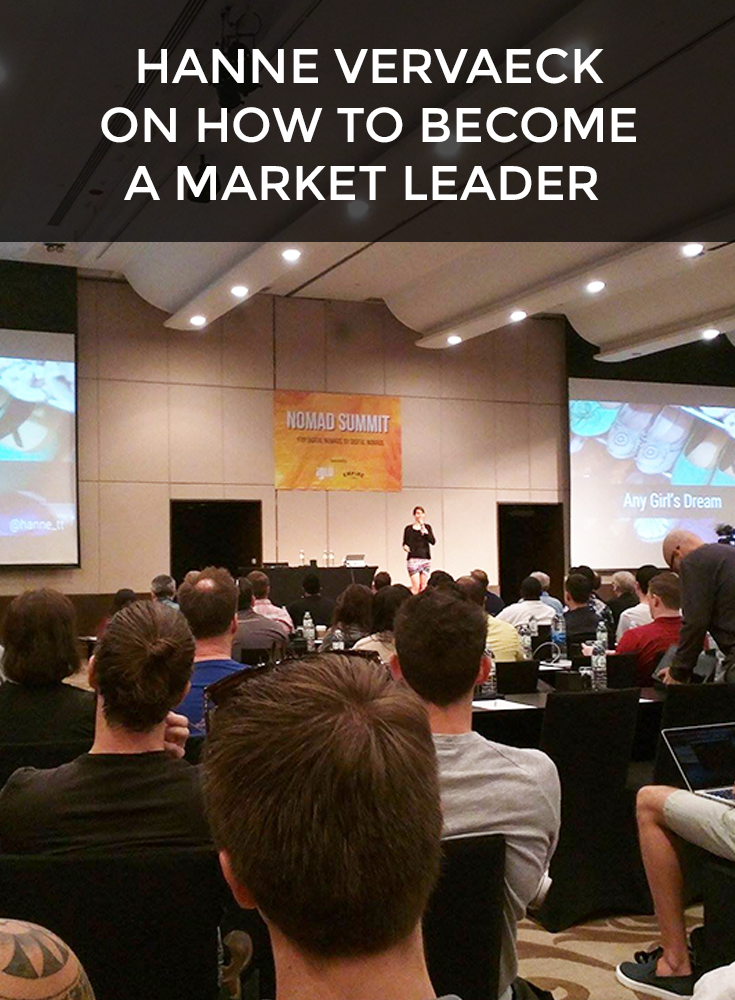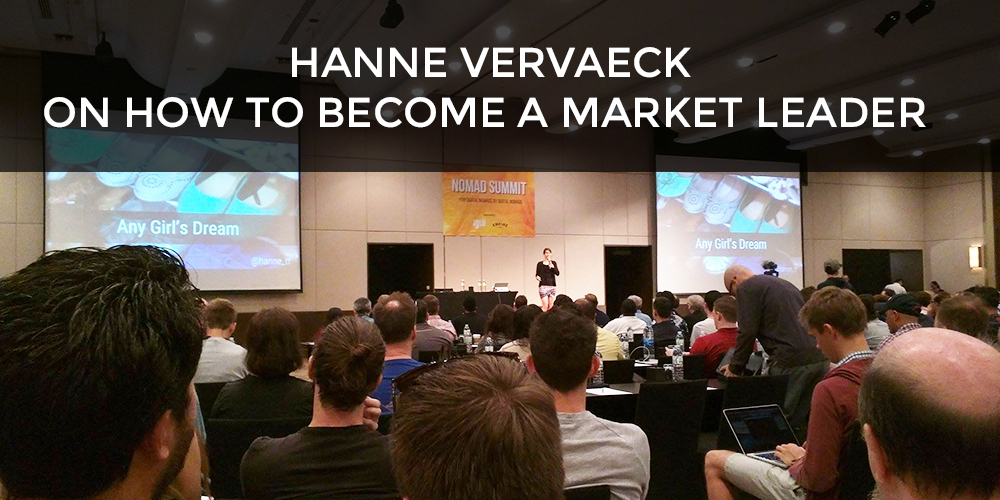While I was in Chiang Mai, Thailand, I attended the Nomad Summit 2017 hosted by Johnny FD and Cody McKibben. It was well-organized, and some of the speakers provided good value with actionable content. It was also a good chance for me to network while I was out there as I met a few other nomads at the event.
I took notes while I was watching the presentation. Just like with the Traffic & Conversion Summit, I wanted to provide some of my notes from the event – mainly the ones I thought were useful for you all to check out.
Hanne Vervaeck on How to Become a Market Leader
The MVP – Minimal Viable Product
An MVP – minimal viable product – is a product without the bells & whistles that you want to bring to market. With an MVP, you launch your product quickly over working on a grander idea.
Hanne decided to create a marketplace MVP in which people would fill out forms to buy things, the creator would manually process orders, and she would wire the money to the customer.
This ultimately did not work.
The problem with most MVPs is that it is based on the resources of the people creating it (skills or based on finances). If you don’t have enough resources, the product is just not going to cut it.
The MMP – Minimum Marketable Product
The solution is to build an MMP – a minimum marketable product (she invented this term). With an MMP, you’re creating a product in which people are actually excited to buy.
3 crucial elements of an MMP
- Must-have foundation
- The marketable meat
- The differentiator

Step 1 – Know Your Competition
You have to know who you’re competing against. How are your competitors solving the problem you want to solve? Do some research through Google, Facebook groups, LinkedIn groups and more, and see what people are saying. People will actually tell you how they are solving problems if you ask.
Step 2 – Make a Competitor Matrix
I thought this was a neat idea. Create an Excel spreadsheet and write out all the features on the top row. Then line the competitors on the first column. Then mark X’s on what features each competitor has. The features that everyone has is the must-have foundation (mentioned in the crucial elements of an MMP)
Step 3 – Dive Deeper
People don’t like paying for their customer’s product, but Vervaeck recommends to spend money on your competitor’s products and test them out.
In Vervaeck’s example with launching WordPress plugins, she used her competitor’s product which claimed having A/B testing functionality. But when she actually used the product she realized the A/B testing was coming from Google Analytics and not the plugin.
Step 4 – Did You Find Your Spot?
By completing the previous steps, you should be able to identify ways you can differentiate yourself and figure out new features/functionalities that others haven’t provided. If you don’t find your differentiating factor you will be another “me-too” product. Using these steps, you can check if there is an empty spot for your product.
Conclusion
I thought Vervaeck’s presentation had some good points. Though you still need to consider timing of launch, don’t be impatient to bring a product into your space. Make sure there is something that really distinguishes your product from the rest and makes it marketable. For me personally, I thought the spreadsheet idea and competitor analysis deep dive were great pieces of advice.
For more information, you can access her slides here.



